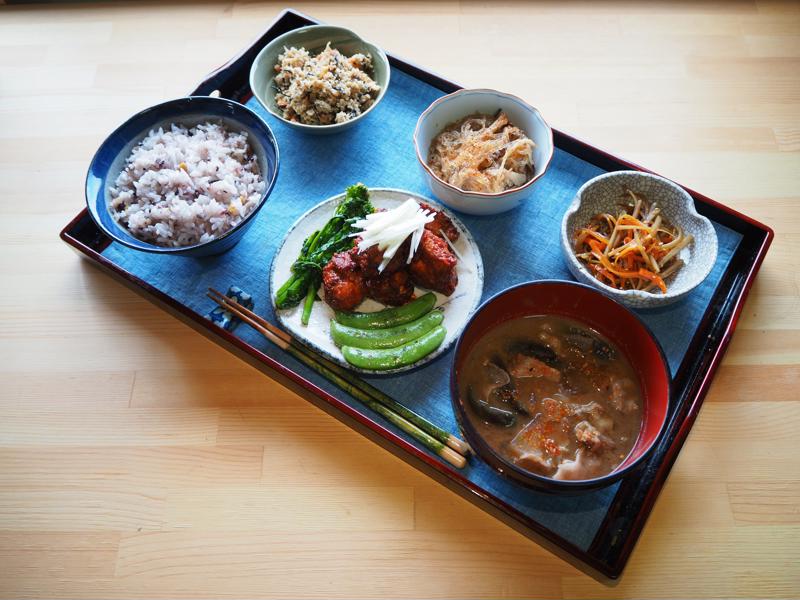Yakitori is a Japanese dish of chicken that is skewered and grilled over charcoal. Convenient and portable, this means of serving poultry has long been a staple of pubs and take-out restaurant in its native country, a common after-work snack that is available in numerous variations. Many American chefs have also tried their hands at yakitori, producing versions that are faithful to their roots or intriguing departures. As a culinary academy student, you may find a place for your own take on this chicken dish in your repertoire. First, learn more about yakitori and some of the best examples available in the States:
What makes yakitori great?
Yakitori is the kind of dish that is fantastic in its simplicity and can be readily enjoyed on the go. The New York Times provided an easy recipe that calls for combining soy sauce with mirin, sake or sherry, plus brown sugar, garlic and ginger. After simmering this tare, or Japanese dipping sauce, pour it over one-inch pieces of chicken. Cover the chicken, chill in the refrigerator and allow the meat to marinate for at least an hour. Then, load up your skewers and start grilling.
“Yakitori is simple and can be enjoyed on the go.”
Serious Eats noted that the easiest part of the chicken to prepare using this method is the thigh, referred to as negima. Traditionally, the chunks of thigh meat switch off with scallions on the skewer. Even a novice can produce juicy, satisfying results with this form of yakitori.
However, some purveyors set themselves apart with their meticulous preparation and presentation or by offering a wide range of options for customization. New York City ramen master Ivan Orkin, of Ivan Ramen, discussed his favorite Tokyo spots for yakitori with Saveur, pointing out the features that make these establishments special.
One aspect that yakitori fans appreciate is being able to choose almost any part of a chicken to devour, from the skin to the small intestine. Orkin noted that at one of his favorite establishments, Toritama, the menu is literally a chart of chicken anatomy. Other restaurants emphasize the quality of their organically raised poultry.
 Restaurants pair yakitori with a range of delicious dishes.
Restaurants pair yakitori with a range of delicious dishes.Restaurants where the chicken is on point
U.S. residents who have a craving for a skewer packed with tasty grilled chicken have plenty of choices as well. A number of chefs have made their mark on this straightforward dish, distinguishing themselves by delivering quality ingredients and bold flavors.
At Portland, Oregon’s Biwa, patrons can order a skewer of chicken thigh or breast meat. On the other hand, they can choose from similarly prepared meats like lamb tsukune or bacon enoki or a vegetarian option such as shiitake mushrooms. The menu is full of other tempting dishes inspired by Asian traditions, including gyoza, or Japanese-style pan-fried dumplings, and Korean-style beef tartare, or yukke.
The critically renowned Yakitori Totto boasts its organic, free-range chickens and unique spins on the traditional skewers. The New York City restaurant’s menu features the usual poultry options but also hearts drawn from three chickens, a muscle found beneath the heart that is taken from four chickens and stuffed chicken meatballs. Other possibilities include lamb chop, pork neck, skirt steak or eggplant.
Nabankan in Los Angeles is a small establishment that was commended by Serious Eats for bringing a surprising variety of tasty items to the table. Customers can enjoy a huge range of chicken parts like giblets, hearts, tails or leg cartilage, all expertly prepared. If you’d like to pair your yakitori with something a little different, this restaurant also has extensive selections of sushi, tempura and beef dishes.
As Bon Appetit pointed out, if you visit San Francisco’s Rintaro, you’ll experience both Sylvan Mishima Brackett’s impressive cooking and a unique architectural space based on ancient Japanese practices. There are plenty of great pieces of sashimi and fried items on the menu, including the signature gyoza filled with pork and ginger and topped by chicken foot jelly and the house-made chili oil. Still, the yakitori stands out as patrons may opt for chicken thighs, breasts or meatballs, or choose from several vegetarian versions: potato, asparagus or king trumpet mushrooms.
Use the skills you learn from an accredited online culinary institute to explore the tasty possibilities of yakitori. You may find that you can create exceptional meals by grilling skewers full of painstakingly prepared chicken.




